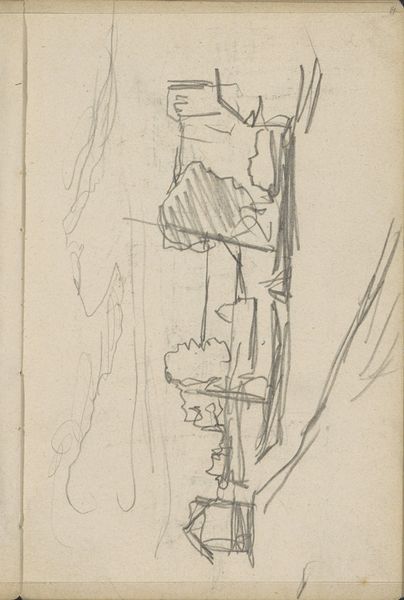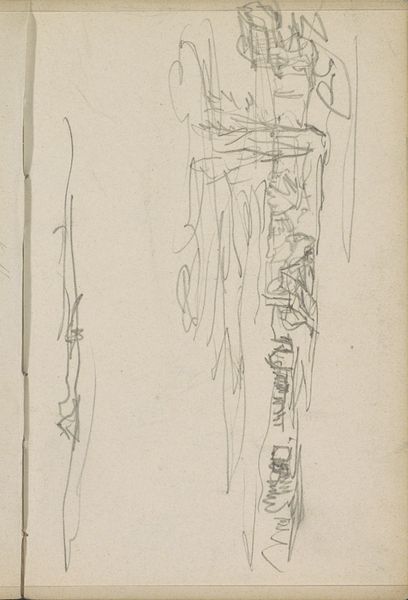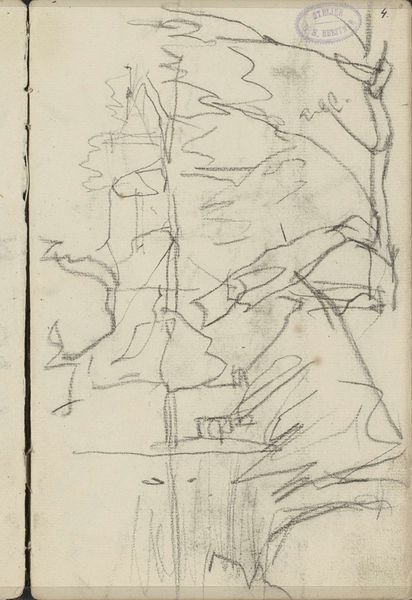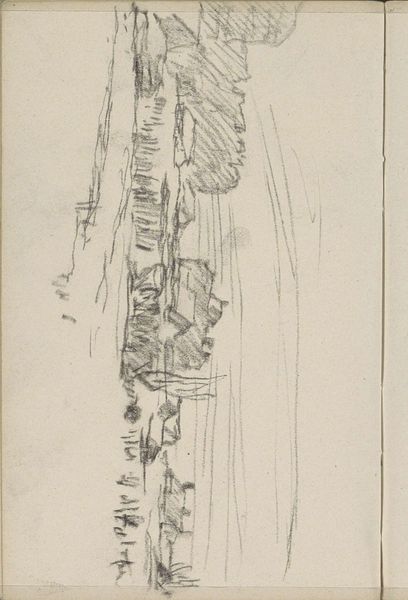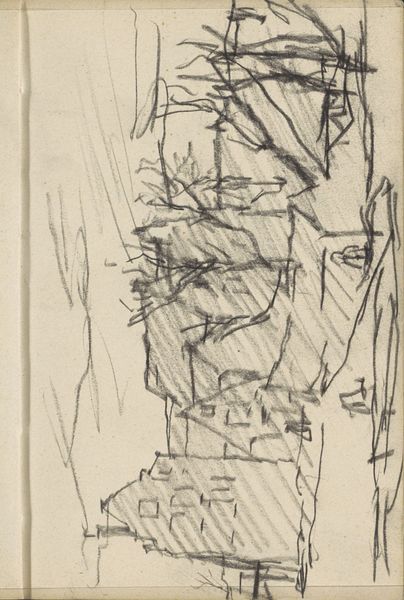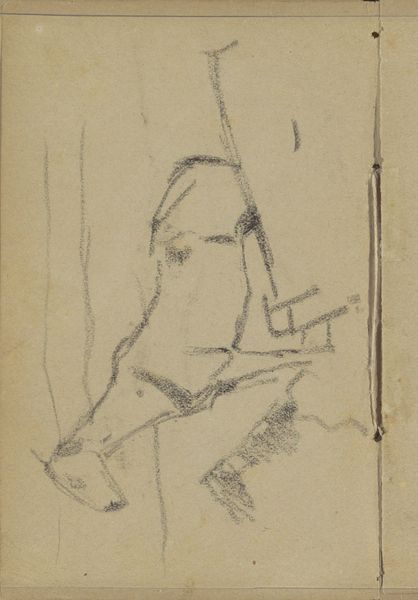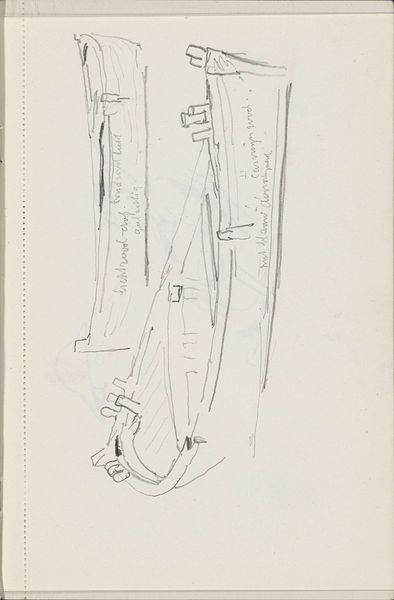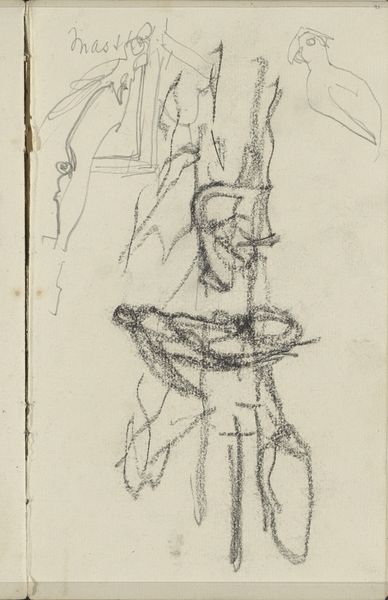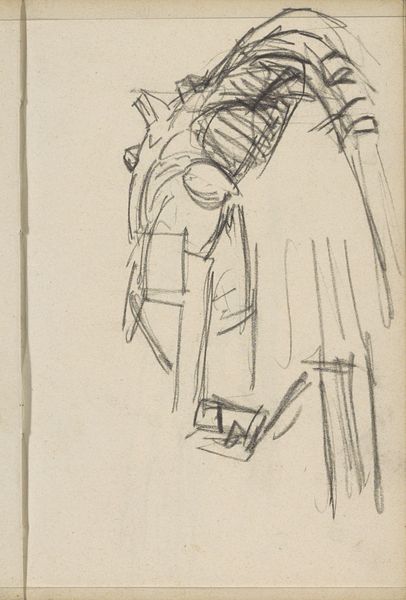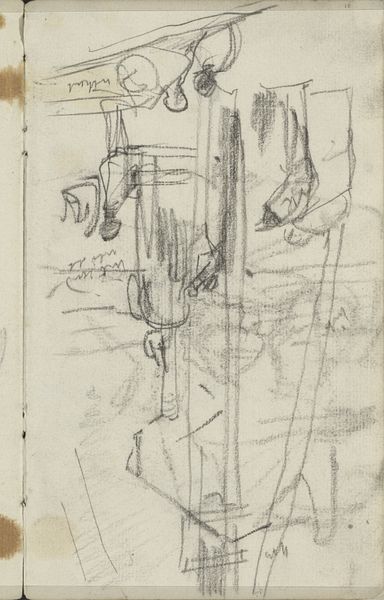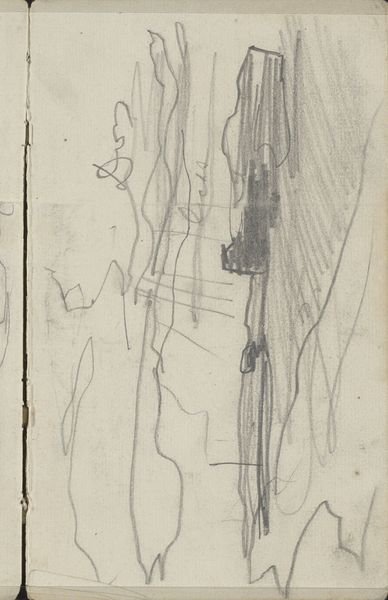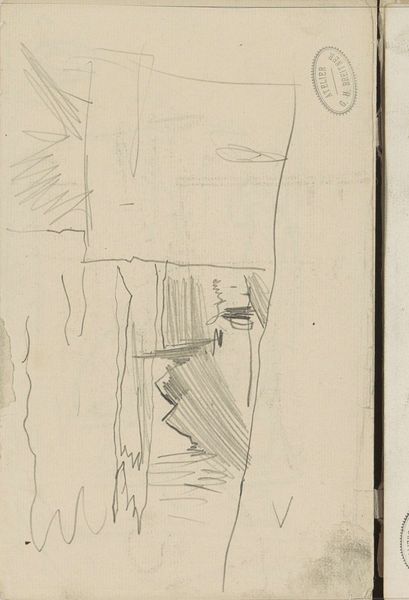
Copyright: Rijks Museum: Open Domain
Curator: Let’s discuss this candid drawing by George Hendrik Breitner, “Gezicht in Amsterdam met boten,” created around 1912. It’s currently held at the Rijksmuseum. Editor: My first impression is of something fleeting. A glimpse, a memory caught on paper. The light pencil strokes give it a dreamlike quality. What do you make of its style and composition? Curator: I think it’s a perfect example of Breitner’s impressionistic and realist inclinations. The hurried lines and skeletal structures capture the industrialization transforming Amsterdam. The boats signify trade and movement, pivotal elements in the city's narrative at the turn of the century. It also reminds us of the long legacy of waterways, arteries that have fed cities, states, empires… Editor: Absolutely. Considering Breitner's interest in capturing the city's energy, you wonder, what were working conditions for those laborers on the docks, what were the environmental costs of progress and production? It invites questions about labor, urban development, and even social inequality embedded within the seemingly picturesque landscape. Curator: Yes, I agree that he provides us with an image infused with tension that invites that discussion. There is such cultural meaning condensed within what at first looks like simply sketched lines. Editor: And notice how he omits specific details. The generic outlines of the ships against the water seem to evoke anonymity within the context of labor; an army of hands, a fleet of industry with no identifying marks. What appears straightforward hides an almost sinister edge. Curator: And perhaps he seeks to expose how those systems—especially those related to colonial economies—have rendered individuals disposable by their exploitation. A very powerful observation! Editor: Definitely! It's a subtle work that challenges our perception of Amsterdam’s golden age and progress, which seems incredibly appropriate considering our current understanding of post-industrial ruin and decolonization. Curator: By drawing connections between history and visual symbols in what might seem to many like a basic sketch, Breitner offers an invitation to excavate a larger shared history through a simple city scene. Editor: A call, perhaps, for continued reflection, a kind of looking closely to help see the way the world and its cities might become.
Comments
No comments
Be the first to comment and join the conversation on the ultimate creative platform.
